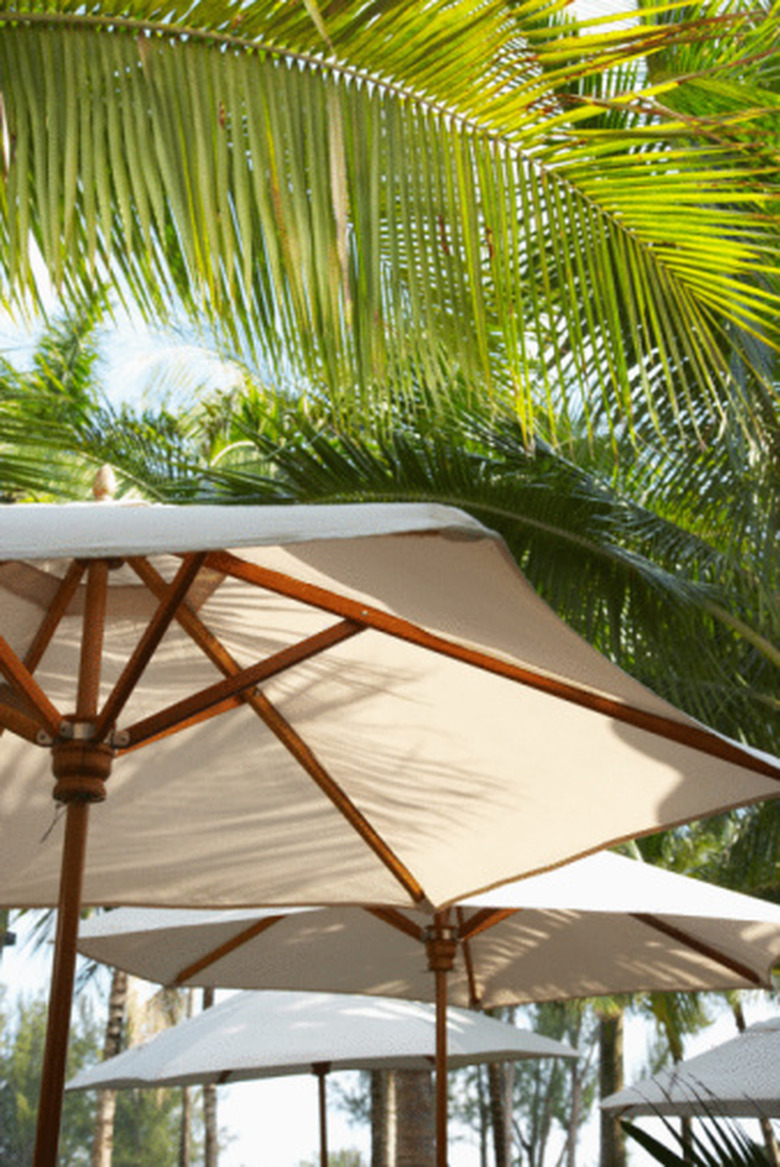Umbrellas For Plants
Plants get sunburned, too. In some areas, even full-sun foliage withers and collapses from the intensity of midday heat or from too many hours of bright light during the day. If you have no shade cover for your delicate blooms, then create some. Install parasols for your plants from a wide array of UV-protection sun covers that adapt to the constraints of your space and the needs of your heirloom rose bushes and baby peas.
Market Umbrellas
The simple solution for too much sun in the garden is a garden umbrella. These umbrellas, sold as patio or market umbrellas, require some kind of heavy stand to anchor them and come in various sizes and circumferences. Common sizes are six and nine feet in diameter, but larger and smaller umbrellas are also available. For the best sun protection, look for white or light-colored fabric. Some umbrellas are made with UV protective fabric, but they tend to be somewhat pricier. You can turn a dark-colored umbrella into an effective heat reflector by covering the fabric with aluminum foil, shiny side out, or taping or gluing white fabric to the shade. Invest in an adjustable umbrella that bends to different angles, so you can tilt it easily as the sun moves across the sky.
Shade Sails
Shade sails are umbrellas without poles, designed to give flexible coverage over a large area. They are useful when the topography of your garden makes it difficult to set an umbrella in a stand, as would be the case around water features or rock gardens, arbors, or with multi-height plants. The shade sail can be stretched and reconfigured by increasing or decreasing tension at the anchor points. A membrane of fabric is attached with grommets and hooks or clips to several fixed structures like poles, the corner of a patio, or trees. The tension and shape of the sail is adjusted by steel turnbuckles or pulleys at the corners or edges of the sail. Sails come in varied shapes: from polygons, to triangles, to amoeba-like constructions, and can be reshaped as a prized shrub grows or a vegetable garden comes into flower. The fabric is usually a high-density polyethylene, a knitted, breathable material that is treated for UV protection.
Cantilever Umbrellas
Cantilever umbrellas adjust in a variety of directions to cover a sensitive garden plot. The base of the umbrella is off to one side and a frame holds the canopy over the area to be protected. That keeps the heavy base off flowerbeds and vegetable plots or to the side of an integrated water feature. The frame allows absolute free movement for the gardener under the umbrella and can move the shade up and down or around 360 degrees. More expensive models have an auto-tilt feature that lets you crank the umbrella open until it begins to tilt and then position it to block the sun's rays, allowing easy movement for the plants to be shaded all day. Cantilever umbrellas come in round, hexagonal, square, octagonal, rectangular and free-form shapes.
